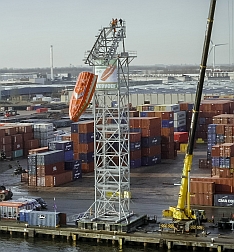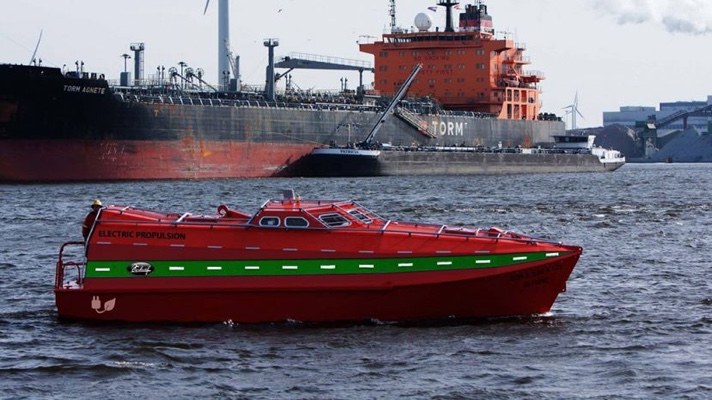The world’s first electric-powered freefall lifeboat has passed its final drop tests in Amsterdam. The rugged electric system is designed to withstand the heavy g forces of freefall launch and can sail at full speed for 30 minutes, followed by 10 additional hours at 50 per cent of maximum speed.
The aluminium 32-passenger lifeboat was built by Dutch company Verhoef with Torqeedo providing the integrated propulsion system. The vessel will be deployed on AkerBP's offshore platform in the new Valhall Flank West oilfield project in Norway. The contract with AkerBP includes an option for similar lifeboats in the future.
 In the video below, different engineers and Verhoef CEO Martin Verhoef explain what advantages the electric lifeboat has as opposed to the diesel-powered equivalent and they discuss the testing process. Of course, the video also contains footage of the drop tests.
In the video below, different engineers and Verhoef CEO Martin Verhoef explain what advantages the electric lifeboat has as opposed to the diesel-powered equivalent and they discuss the testing process. Of course, the video also contains footage of the drop tests.
Emission-free Propulsion System
Verhoef and Torqeedo engineers have developed and tested a fully integrated emission-free propulsion system consisting of a 50 kW, 80 horsepower-equivalent, Deep Blue inboard electric motor powered by three 30.5 kWh Deep Blue batteries with technology by BMW i.
The electric system also includes an inverter to drive a water spray pump, which is a requirement in case the craft drives through burning oil on the water’s surface.
Reduced Maintenance Costs
One of the primary motivations behind the switch to electric power is to reduce the high maintenance costs of diesel engines currently in use, according to Verhoef. Experience has shown that diesel lifeboat engines require a great deal of ongoing maintenance and repairs. Soot accumulation in the seldom-run engines can cause internal damage and negatively affect the performance and reliability of the evacuation system. Electric propulsion also eliminates the need to transport, store and handle diesel fuel on the platform.
Remote Monitoring
Verhoef estimates that the electric propulsion system will reduce operating costs by about 90 to 95 percent compared to combustion-powered lifeboats. The built-in connectivity function will enable remote monitoring of the condition of the electric system from shore. The system also comes with a nine-year battery capacity warranty.
Towards Transforming the Shipping and Cruise Industry
Verhoef CEO Martin Verhoef commented: 'This is what the industry has been waiting for to reduce their OPEX and carbon footprint. We are convinced that electric propulsion will be the wave of the future for lifeboat technology. While we are focusing initially on applications like oil platforms, which have shorter distances to travel to reach shore, we believe this technology will also ultimately transform the shipping and cruise industry as well.'








